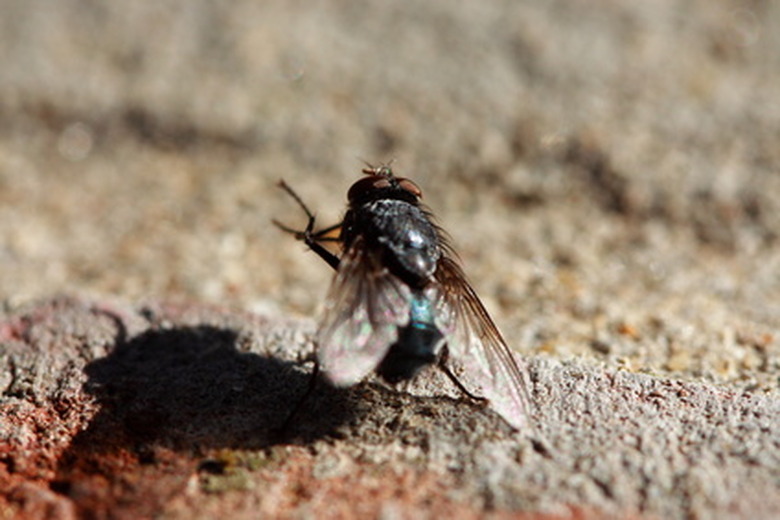Types Of Maggots
Maggots are the larvae phase of insects like flies and beetles. They live on of the dead tissues of living organisms and decaying organic matter. It takes only 8 to 20 hours for maggot infestation of hundreds of maggots from the start of a maggot life cycle. There are different types of maggots, depending upon the insects to which they belong and the common areas of infestation.
Apple Maggots
Apple Maggots
Apple maggots are among the most serious fruit pests in the United States. Apple maggot adults emerge from the ground in the summer. The female flies have 4 white bands on their abdomen while the males are smaller in size and have black bands. Both have clear wings with black bands. After feeding on the honeydew on leaves, the females start to puncture apple skins and lay eggs beneath the fruit skin at an average of 300 in 30 days. The eggs hatch in 2 to 10 days producing 7 mm, cream-colored, legless maggots or larvae. The larvae feed on the fruit, tunneling their way through and rotting the fruit, for about 30 days. The larvae then drop and burrow into the ground and develop into the pupal stage. The apple maggot pupae are mostly within 2 inches of the soil surface and overwinter in the soil, emerging as flies in the summer. Apple maggot damage results in stunted fruit growth with misshapen and dimpled fruit. Control includes the use of insecticides to control maggots before the flies start to lay their eggs.
Root Maggots
Root Maggots
Root maggots are common pests of the root crops such as onions and carrots. Adult root maggots resemble small houseflies and they lay their eggs in both the cracks of soil or in the stems of plants that are at soil level. The white to yellow-white maggots are legless and feed for about 4 weeks on the roots that they infest causing plant yellowing. The roots display tunnels created by the maggots. Best preventative measure is to rotate crops and to use natural control strategies such as maggot predators like ground beetles and tiny wasps. Soil insecticides can be used in cases of heavier infestations.
Rattailed Maggots
Rattailed Maggots
Rattailed maggots are also referred to as drone flies. Though the flies are very similar to the honey been in appearance, the brownish to black, hairy flies are singled winged. The maggots are grub-like and cylindrical with a breathing tube that looks like a tail. The drone flies occur throughout the world and are attracted to bright colored flowers and decay. The maggots frequently feed on the decaying matter in stagnant water and dung pits. Drone fly maggots usually do not require chemical methods for control and proper sanitation and disposal of sewage and manure keeps the insects from occurring.
Cite This Article
MLA
Sarfaraz, Irum. "Types Of Maggots" sciencing.com, https://www.sciencing.com/types-of-maggots-12327285/. 21 July 2017.
APA
Sarfaraz, Irum. (2017, July 21). Types Of Maggots. sciencing.com. Retrieved from https://www.sciencing.com/types-of-maggots-12327285/
Chicago
Sarfaraz, Irum. Types Of Maggots last modified March 24, 2022. https://www.sciencing.com/types-of-maggots-12327285/
